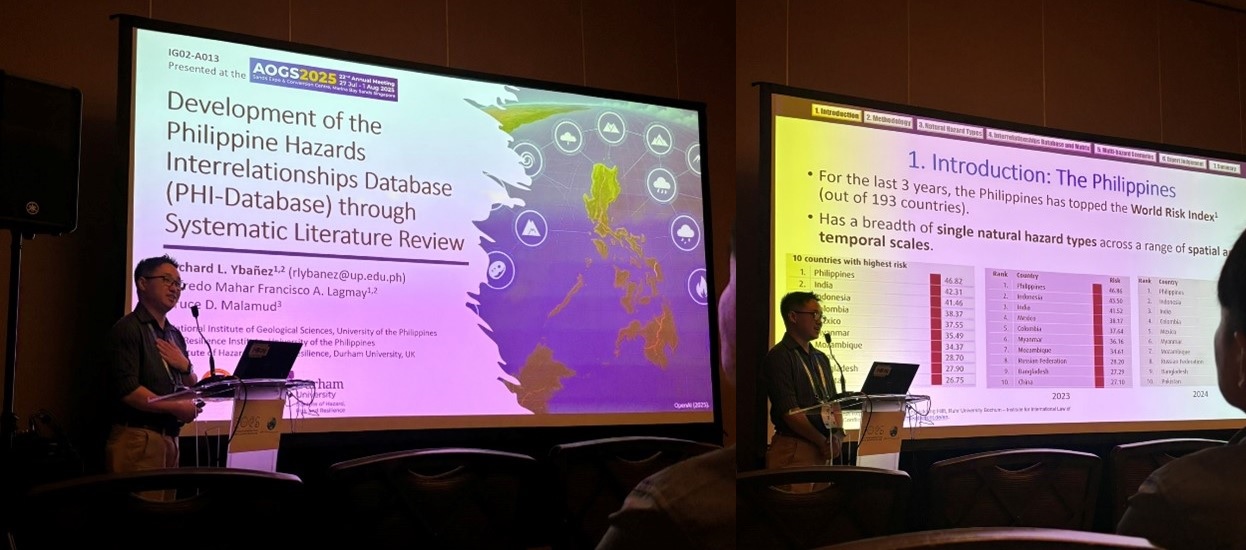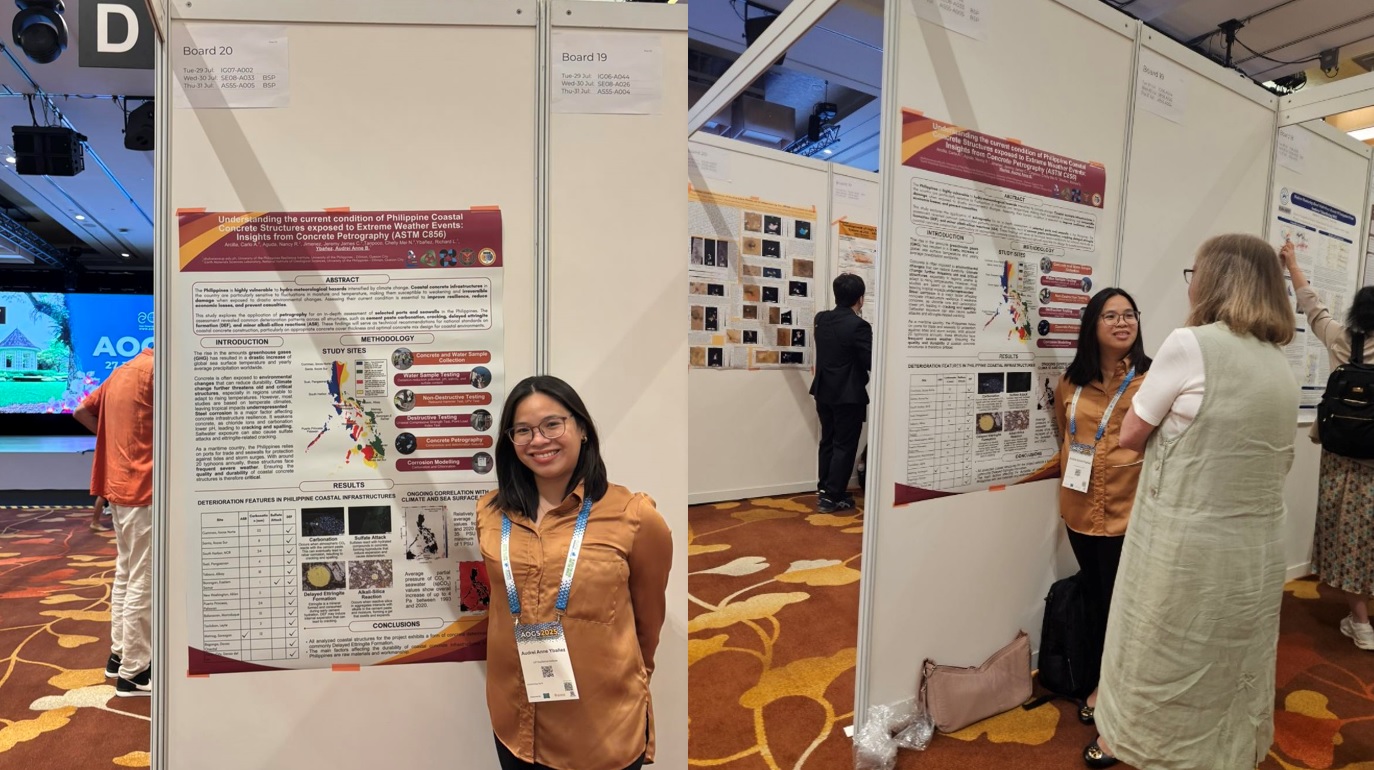By Richard Ybañez, Education Division and Audrei Anne B. Ybañez, UP NOAH Center
The University of the Philippines Resilience Institute (UPRI) joined scientists, researchers, and practitioners from across the Asia-Pacific region at the Asia Oceania Geosciences Society (AOGS) Annual Meeting 2025 held in Singapore. The annual gathering brought together experts working on geoscience and environmental challenges, with one of the central themes being on climate and disaster risk reduction.

In line with its mandate to advance science-based resilience strategies, UPRI presented three studies that explore the complex interplay of hazards in the Philippines, a country consistently ranked among the most at-risk to climate-related and geological events.
One of the presentations, “Development of the Philippine Hazards Interrelationships Database (PHI-Database) through Systematic Literature Review”, introduced an evidence-based tool for understanding how hazards interact and amplify disaster impacts. Drawing from over 250 peer-reviewed and grey literature sources, the PHI-Database maps out 76 potential hazard interrelationships in the country including earthquake-triggered landslides and rainfall-induced flooding. The initiative offers a framework for anticipating cascading hazards and informing early warning systems and risk governance.

In the same session, UPRI also shared findings from the study “Lahar Deluge in the Coastal Towns of Taal Lake”, which investigated the multi-hazard impacts of Severe Tropical Storm Trami in 2024. The research revealed several square kilometers of landslides triggered by extreme rainfall on the steep caldera slopes of Taal Volcano, contributing to deadly lahars that swept through nearby coastal communities. The study highlights the delayed but devastating effects of volcanic eruptions when combined with typhoons and emphasizes the need for updated hazard maps and integrated disaster planning in the region.

The third presentation, “Understanding the Current Condition of Philippine Coastal Concrete Structures Exposed to Extreme Weather Events: Insights from Concrete Petrography (ASTM C856)”, explored the vulnerability of concrete infrastructure in coastal areas. This study examines the use of petrography to evaluate the condition of selected ports and seawalls in the Philippines. The analysis revealed common signs of concrete deterioration such as carbonation, cracking, delayed ettringite formation, and minor alkali-silica reactions which can reduce the structures’ durability and lifespan. The findings aim to inform national standards for coastal concrete construction, focusing on proper concrete cover and mix design.

The conference also served as an opportunity to build new linkages and meet with old partners and colleagues. Among these were convenors of the 2018 AOGS-EGU Joint Conference on Natural Hazards held in Tagaytay City, Batangas, which UPRI staff supported as conference volunteers. Another Joint Conference on Natural Hazards is being planned for 2027 in Southeast Asia.

UPRI’s participation in AOGS 2025 reflects its continued commitment to producing policy-relevant, science-driven research that addresses the realities of multi-hazard risk in the Philippines. Through international collaborations and platforms like AOGS, UPRI aims to contribute to the development of more resilient communities both locally and across the Asia-Oceania region.
To learn more about the AOGS Annual Meeting, visit: https://www.asiaoceania.org/aogs2025/
